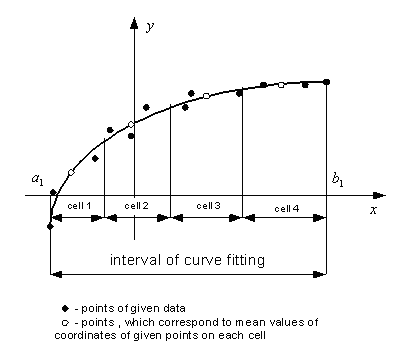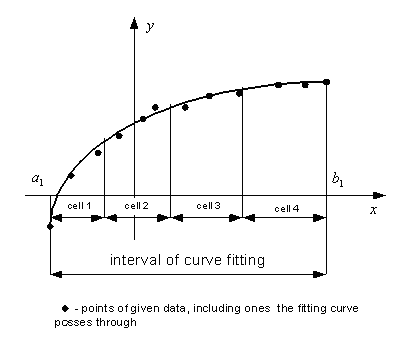
| General information |
| Description |
| The main purpose of this calculation is obtaining relatively simple formula of data fitting y=f(x). We apply the generalized Pade functions for the approximation of data in the following form: |

|
|
where ai, and bi are coefficients, which should be chosen
as the best approximation of given data. We try different values of m and k,
and different substitutions X=xq, X=exp(qx) (-1≤ q ≤ 1),
and X=log(x) in the program looking for the best approximation. Pade functions have the following advantages: |
|
|

|
|
| An excellent summary of properties of Pade functions you can find here. |
| Assumptions |
| It is assumed that we have enough data for a reasonable approximation. We start to calculate the Pade function coefficients when the number of them is equal to 3, increasing this number until we reach the required accuracy or any other condition of approximation defined by user. |
| Methodology |
| We use two ways of choosing the points, through which the Pade function should pass. In both cases we include two boundary points. Using the first way we also include points, which have coordinates corresponding to the mean values of coordinates of given points that belong to each cell (Fig. 1). |

|
| Figure 1. Data and fitting curve of the first way of approximation. |
| Using the second way, we include one given point from each cell (Fig. 2). |

|
| Figure 2. Data and fitting curve of the second way of approximation. |
| Increasing the number of coefficients of approximation function from 3 until the maximum (or required accuracy) entered by user will be reached and varying the form of approximation function on each step, the program calculates and chooses the best approximation. The criterion is the value of correlation coefficient. The calculation will be completed if one of the following 3 conditions is reached: |
|
|
We suppose that this calculation will be useful for researchers and engineers looking for good approximation of data with simple formula. To check the efficiency of suggested calculation, please see examples. |
| References |
|